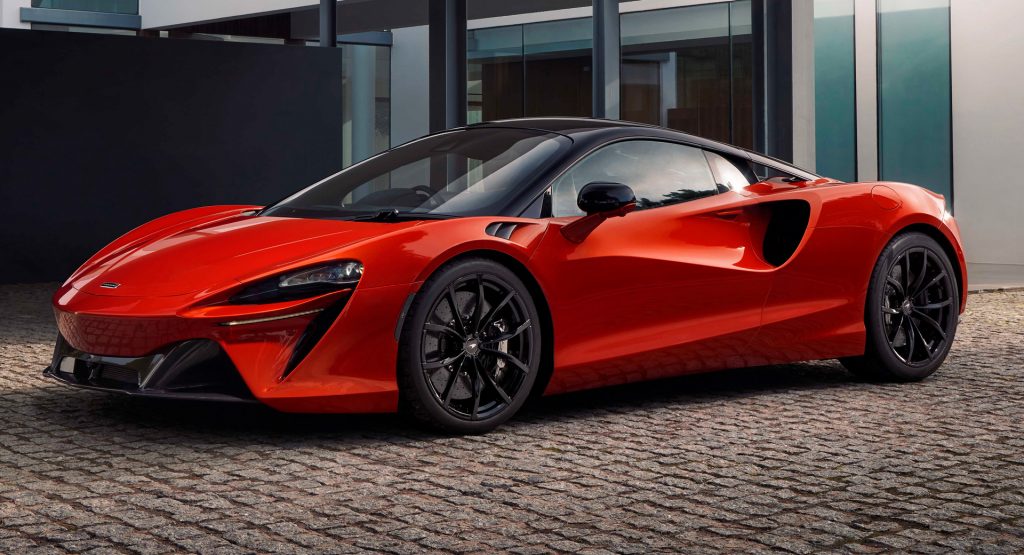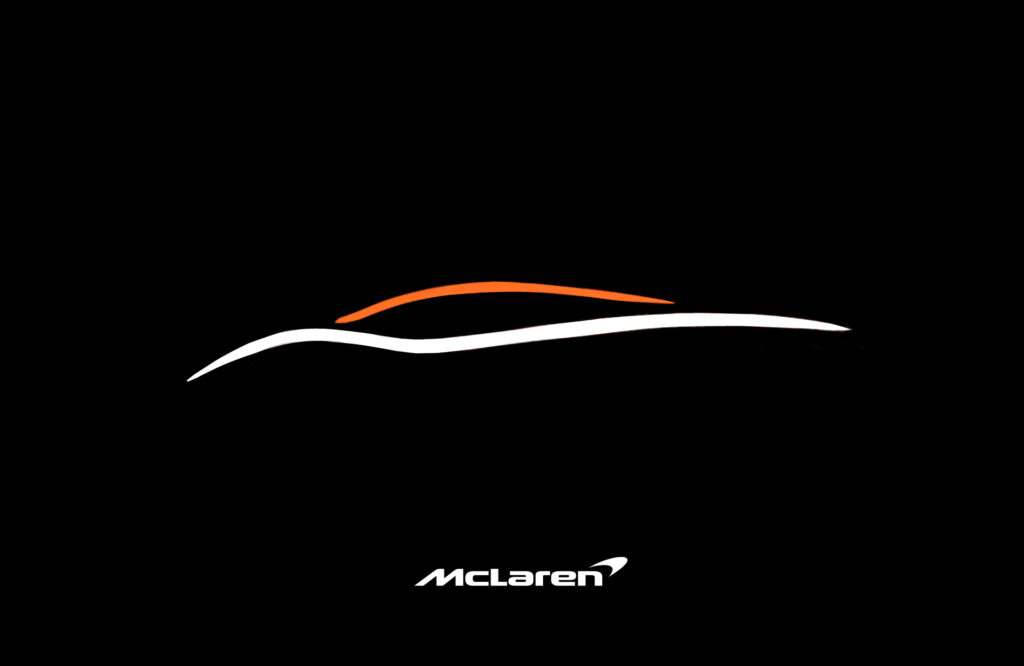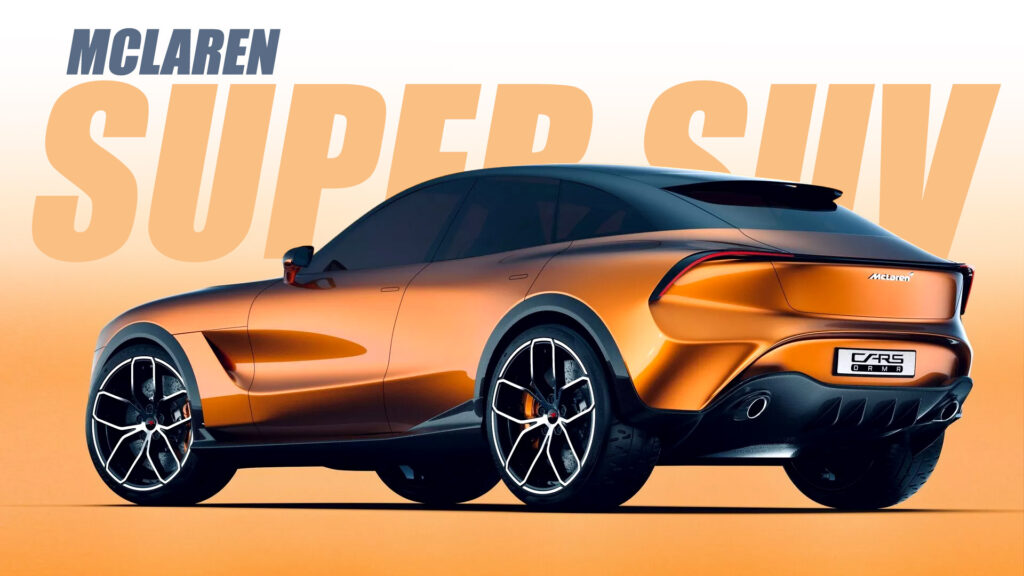- McLaren is developing a super SUV to compete with the recently launched Ferrari Purosangue.
- A collaboration with another automaker is a possibility to share the platform for the SUV.
- Electric version a possibility in the future with advancements in battery technology.
McLaren’s CEO, Michael Leiters, recently confirmed that the brand is working on a “Shared Performance” vehicle aimed squarely at challenging the Ferrari Purosangue. At a recent press event in Europe, we had the opportunity to sit down with Piers Scott, Head of Global Communications at McLaren Automotive, who provided intriguing insights into the development of this highly anticipated future model.
Scott clarified that McLaren is still “exploring a wide variety of different options” for the SUV, indicating that no final decision has been made regarding its design and underpinnings. However, he emphasized that the “shared performance” model could potentially feature a two- or four-door body style and would definitely accommodate more than two seats.
More: McLaren Dealers Get A Glimpse Of $2 Million Hypercar Coming In 2026
This approach aims to make it the most practical McLaren yet, surpassing the iconic three-seater F1 and Speedtail supercars.
The British company possesses all the essential tools for crafting supercars: carbon fiber tubs, in-house developed V6 and V8 powertrains, extensive electrification experience, and a rich motorsport heritage. While these assets could potentially be leveraged across different vehicle segments, creating a new architecture would necessitate a substantial investment of at least £1 billion ($1.3 billion), posing a considerable risk for a low-volume automaker.
In this context, McLaren is currently exploring various options to procure an SUV-compatible platform from another OEM, potentially enabling the adoption of either hybrid or fully electric powertrains. For hybrid configurations, the vehicle could incorporate one of McLaren’s proprietary V6 or V8 engines at its core, akin to the setup seen in the Artura.

When queried about potential partners, Scott said that BMW could be an option, all but confirming the rumors. Apart from their shared history, the brands maintain existing ties, with BMW already supplying batteries for the hybrid system in the Artura. While specifics were not disclosed, it’s conceivable that a McLaren-BMW partnership could yield a performance-oriented plug-in hybrid SUV, potentially more focused than BMW’s own XM.
Scott also mentioned that a potential partner for sourcing an EV-dedicated architecture could come from Southeast Asia, though he did not delve into specifics. As for US automakers, Scott categorically stated that McLaren is not currently in talks with Tesla, debunking earlier rumors, and also clarified that discussions with Lucid were unfounded.
Speaking about the potential of an EV, Scott told us that McLaren currently sees no market interest in a £400,000 / $500,000 SUV with a fully electric powertrain. However, he emphasized that such an offering hasn’t been ruled out for the future. After discussions with partners and suppliers, McLaren believes that 2028 is the earliest feasible timeline for an electric SUV without compromises in weight and performance, owing to anticipated advancements in battery technology.
Infusing McLaren Character Into A Shared Architecture
The high-ranking official revealed that McLaren hopes to finalize a deal within 2024. However, the process is complex, involving checks not only on the financial side but also on the technical compatibility of the shared architecture with McLaren’s specific requirements. Consequently, engineering teams will need to travel back and forth after signing confidentiality agreements with potential partners to assess whether the hardware meets McLaren’s standards.
Independently of the partnership, the model would feature a McLaren-specific chassis setup and potentially structural changes aimed at enhancing driving dynamics, increasing rigidity, and reducing weight. The latter is critical for the Woking-based brand, which relies on lightweight materials and technologies to counterbalance the added weight associated with electrification.

McLaren’s New Design Language
While the partner for the “shared performance” model has yet to be decided, McLaren designers have already explored different scenarios to assess whether potential architectures align with the brand’s styling and proportion requirements. Scott emphasized that a McLaren SUV should feature a notably short rear overhang to clearly communicate its performance credentials.
He added that McLaren could potentially gain access to a new platform in exchange for equity or purchase it directly from the desired partner, supported by new or existing investors. The brand was recently fully acquired by Bahrain sovereign wealth fund Mumtalakat Holding Co. This new single-shareholder structure provides McLaren’s management team with the freedom to chart a new course without encountering setbacks.
Closer To Ferrari Than Lamborghini
In terms of character and exclusivity, the new offering would align more closely with the Ferrari Purosangue rather than the higher-volume and more affordable Lamborghini Urus. McLaren intends to preserve its low-volume approach, allowing it to continue offering cars with combustion engines for as long as feasible.
Scott mentioned they anticipate staying under 8,000 sales per year throughout this decade, marking a notable increase from their all-time sales record of 4,806 cars in 2018. However, this figure still falls short of Lamborghini’s 2023 sales of 10,112 units and Ferrari’s 13,663 units.
Note: The renderings in this story are unrelated to McLaren and do not carry their endorsement.









